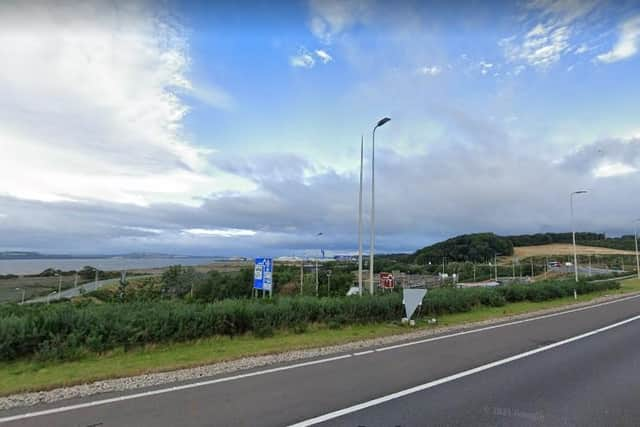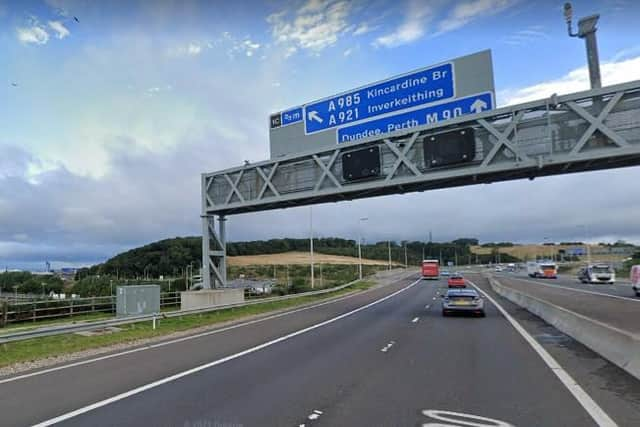M90 masterplan: 113-acre country park, hotel and leisure plans in major ‘Forth Fife’ development
and live on Freeview channel 276
The so-called ‘Northern Gateway’ project forms part of an ambitious vision for arable agricultural land between the M90 motorway and the town of Rosyth, and aims to boost Fife and the wider Edinburgh City Region’s economy by attracting visitors and investment into the self-styled ‘Forth Fife’ area.
While publicly available details are at a premium at the moment, Perth-based property consultants Bidwells, acting on behalf of the Alfred Stewart Property Foundation Limited, have submitted an Environmental Impact Assessment (EIA) screening request to Fife Council for “residential, leisure and woodland development” at Castlandhill in advance of lodging a more detailed application.
Advertisement
Hide AdAdvertisement
Hide AdCentral to the masterplan for the area is the creation of what would be called Queensferry Country Park, a huge 113-acre ‘legacy’ country park which would mainly serve the central belt’s population but would be capable of attracting visitors from further afield.


A visitor complex complete with hotel and leisure facilities is also envisaged, while up to 200 private sector homes could also be created to the north and west of the massive site surrounding Castlandhill House.
A spokesperson for Bidwells confirmed the project was an “exciting development opportunity”, but said it was in the early stages of planning and could not comment further.
However, it is understood those behind the project believe the site could deliver a landmark tourist and visitor attraction that could encourage both increased direct tourism in the area and inform visitors of the wider opportunities in the area including the historical sites from Dunfermline to the coastal villages of the Firth of Forth and the East Neuk.


Advertisement
Hide AdAdvertisement
Hide AdDocuments submitted along with the EIA screening request application suggest cycle paths and rights of way will be incorporated into the Castlandhill masterplan, designed to improve active transport links between the site and Rosyth.
“The formation of the woodland park, which will be a major new area of open space and woodland for community use, would provide the opportunity to be maximised for the local and wider community,” they added.
“This part of Fife has limited major areas of high-quality open space and areas such as this have been shown to have significant health, wellbeing and environmental benefits.
“A landscape designed woodland that will provide a landmark area of open space for this and future generations.”
Advertisement
Hide AdAdvertisement
Hide AdThe documents also note that the site was partially allocated for housing in the adopted Fife Local Development Plan 2017 for around 150 private sector units, although the proposed masterplan would seek to increase that figure to nearer 200.
“The net result would be a residential development with new access points adjacent to residential areas of Rosyth,” they continued.
The plans would aim to make the most of the site’s position in the shadow of the Forth Bridges, with good connections to all of Scotland’s seven major cities by air, road and rail.
The nearby docks also have the infrastructure to facilitate cross-national and international ferry sailings, and the nearby Inverkeithing train station is on the main east coast line providing a fast service to and from London.
Advertisement
Hide AdAdvertisement
Hide AdIts proximity to Edinburgh International Airport is also thought to be a major selling point, providing connectivity to world cities and improving accessibility for business and tourism.
It is believed the project was put forward to the Scottish Government to be given national development status as part of the ‘Scotland 2045: Our Fourth National Planning Framework’ process.
However, while an assessment concluded it had the potential for positive effects on people and places, the project was eventually deemed not suitable for such status as it had the potential for negative effects on climate change, was “potentially inconsistent” with the Scottish Government’s spatial strategy and would only have a “sub-national impact”.
